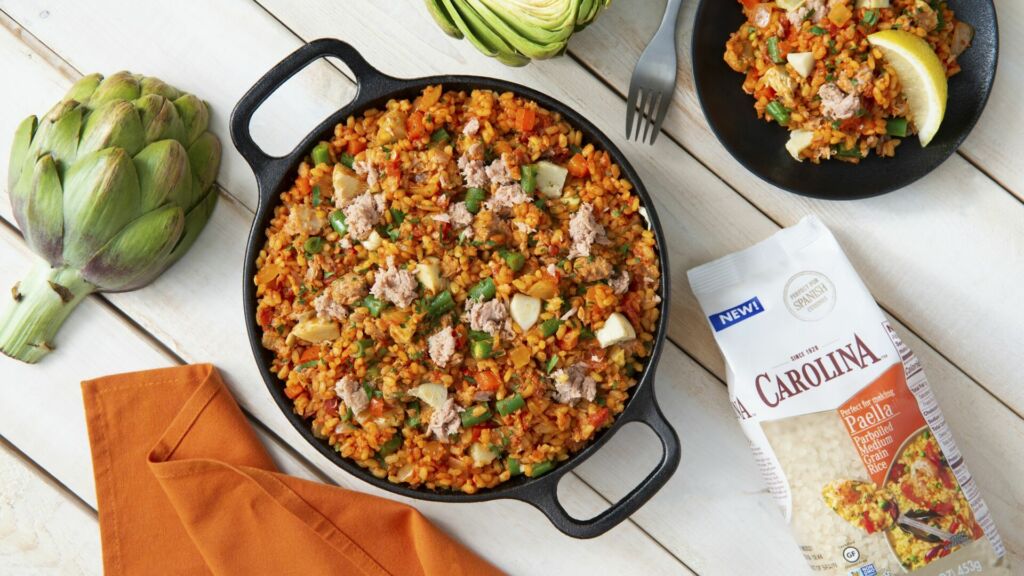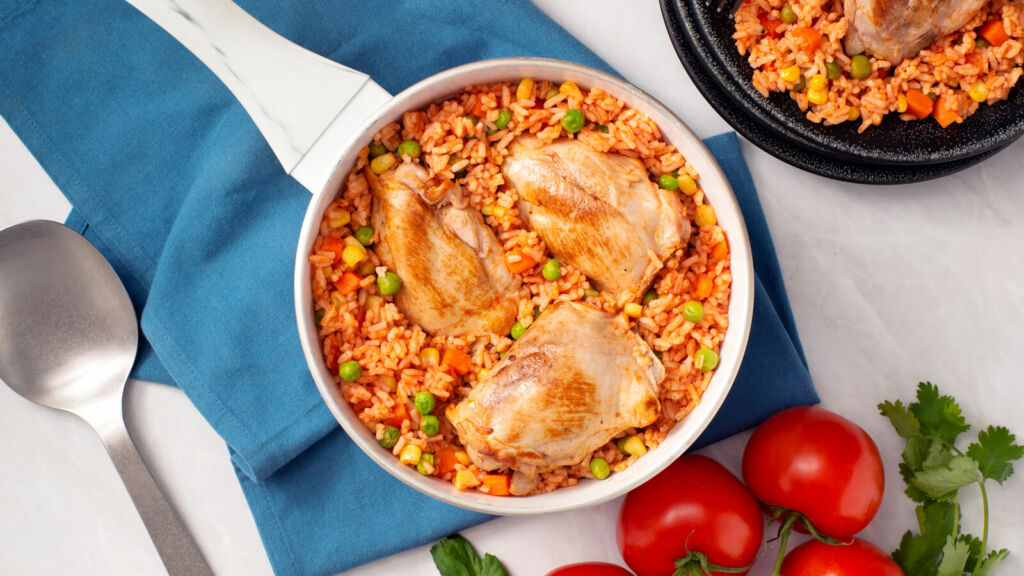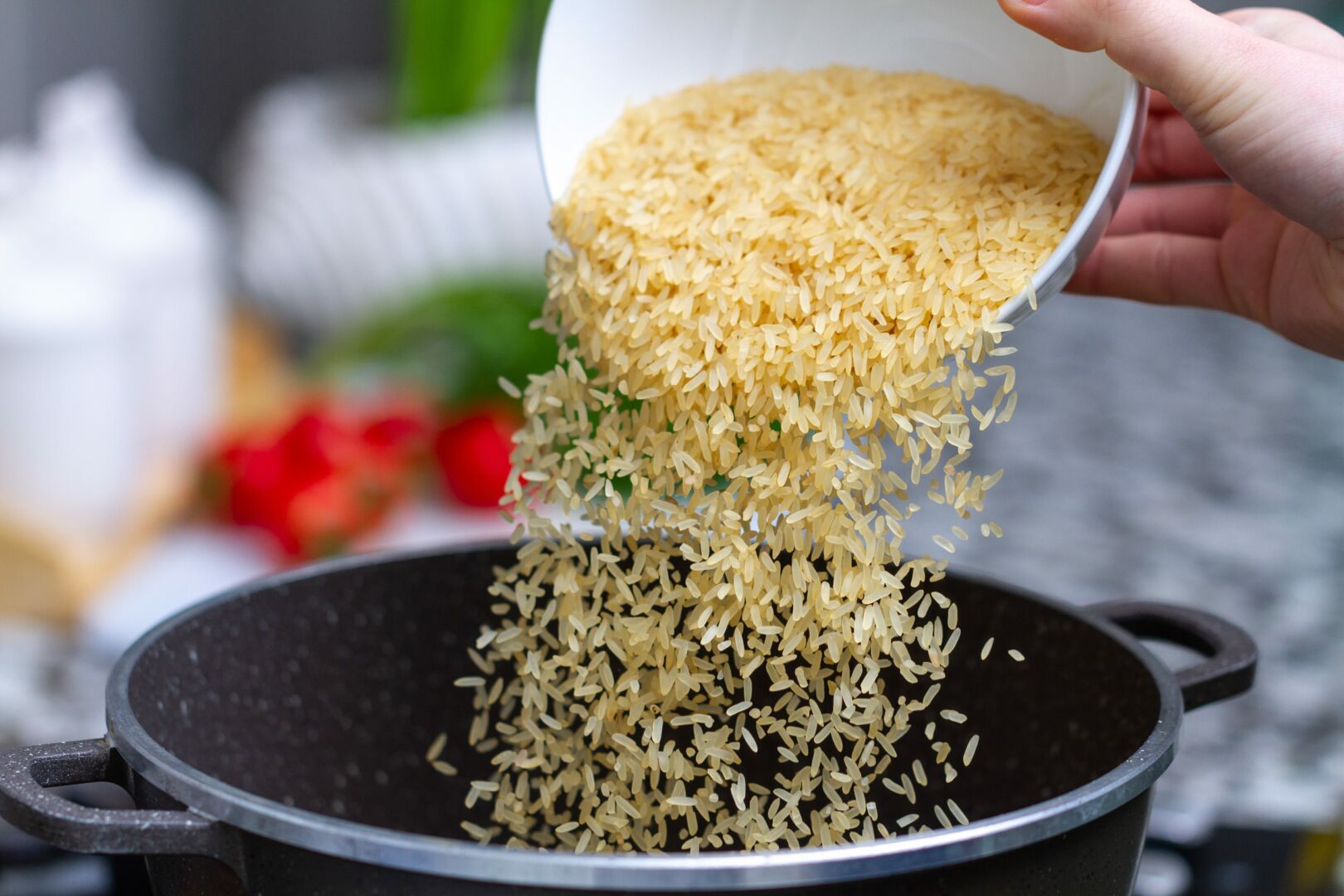Rice is one of the most widely consumed foods and for good reason! It is readily available, inexpensive, can be stored for long periods of time, and probably the most important reason of all, it is incredibly versatile! Many international cuisines around the world feature some sort of rice dish and it’s because the versatile grains come in so many varieties that make them compatible with a vast array of ingredients. From casseroles to skillets, to salads and soups, you can create delicious meals out of rice and any of your favorite ingredients. Regardless of your dietary preferences, the possibilities are truly endless.
However, if you’ve ever been excited to try out a new rice recipe and ended up with disappointing results thanks to undercooked or mushy rice, you’re not alone. There are a few common errors when cooking rice that are all too easy to make and we’ve got a list of them here to take out the guess-work and make it easier to get perfectly cooked grains for any of your favorite rice dishes, every time!
From choosing the wrong type of rice to not measuring the correct rice-to-liquid ratio, we’re here to offer you some tips on what not to do when cooking rice.
1. Ignoring the Differences Between Rice Varieties
The first mistake on our list is not choosing the right rice!
While some varieties can be swapped out for others, the truth is that choosing the right type of rice for your dish can make or break your meal. Understanding the type of meal you are attempting to make can help you choose the right type of grains because you want a type of rice that cooks in a way that compliments your ingredients. Different types of rice have different flavors, textures, and different abilities to absorb flavor. Take a look at this guide for some quick info on what type of rice is best for different types of rice dishes:
Fried Rice and Stir Fry
Fried rice and stir-fry dishes are best made with Extra Long Grain White Rice or Thai Jasmine Rice. This grain variety works well with these types of dishes because the grains stay separate and don’t get sticky when cooked, and they are perfect for absorbing the flavors from the other ingredients so that your dish’s flavors blend perfectly. Taste the difference the right rice can make in this Ginger Pork Fried Rice made with our Carolina® Long Grain & Jasmine Rice Blend.
Paella

For dishes like paella or other Spanish-inspired cuisines, Carolina® Parboiled Medium Grain Rice is best that has been partially cooked in its inedible husk to help maintain higher content of the original, nutrient-filled grains. It cooks to a tender and slightly chewy texture making it perfect for an Authentic Spanish Paella.
Sushi
For meals like sushi or nigiri, you’ll want to go with Short Grain Rice due to its soft and sticky texture. This sticky rice is perfect for molding and holding your sushi roll or pressed rice together and so it will maintain its shape while eating and dipping it in sauce.
Rice Salads
For rice salads, use grains that cook to a fluffy texture and that don’t stick or clump so that they can easily and evenly mix in with the other ingredients. Our special blend of Jasmine Rice with Quinoa is specially made for rice salads because it not only offers the perfect, non-sticky texture, but the combination of aromatic grains and earthy quinoa makes for flavorful and filling salads that won’t leave you hungry.
Whole Grains Alternative
If what you are most interested in is adding more whole grains to your diet, options like Carolina® Organic Brown Rice are the way to go. While all rice varieties are naturally filled with vitamins and minerals, brown rice also offers more dietary fiber and whole grain benefits because it has the inedible hull removed but with the bran and germ layer intact.
Now that you know how important rice selection truly is in creating amazing rice dishes, you are one step closer to becoming a rice pro!
Risotto
Traditional Italian risotto is an irresistible dish loved for its perfectly creamy consistency and bold flavors. To ensure you end up with just the right creamy texture, you want to use Carolina® Arborio Rice. These grains naturally cook to the perfect creamy consistency and traditionally don’t even call for added cream! In fact, that creamy rice texture is also perfect for rice pudding.

2. Rinsing and Soaking Rice
The next mistake on our list is not checking whether you should rinse your rice or not. Most white rice produced in the US is thoroughly washed then fortified with vitamins and other nutrients, which appear as a dusty layer on the individual grains. If you want to preserve those nutrients, do not rinse.
However, there are some short grain varieties that do benefit from washing the rice beforehand. Always make sure to check with the specific recipe to see what is required before getting your hands dirty. Soaking and rinsing rice is often an optional step, but can help preserve natural flavor with rice types, such as Basmati Rice. Soaking rice will allow the rice to absorb some of its water at room temperature. Because some of the water has soaked in, the cooking time is lessened to produce extra-long, slender grains that are light and fluffy.
We’ve made a helpful chart so you don’t make the mistake of rinsing or soaking before cooking if it is not necessary.
| Long Grain Rice: White, Brown, Jasmine, Basmati | Do not rinse rice |
| Medium Grain Rice: Risotto, Paella | Do not rinse rice |
| Short Grain: Sushi Rice | Rinse rice |
Try these tasty Whole Grain Enchiladas using unwashed Carolina® Brown Rice and see the difference for yourself!
3. Ignoring the Water-to-Rice Ratio
Now that you know the importance of choosing the right kind of rice for your dish and when it is appropriate to rinse, don’t make mistake number 3 by not using the right liquid-to-rice ratio or by “eyeballing” the measurements. Not getting this right is a sure way to end up with undercooked or even mushy rice.
As we’ve mentioned before, each rice type is a bit different. We would love to tell you that there is one liquid-to-rice ratio rule of thumb for all types, but that is just not the case. The great thing, though, is that all you have to do is pay close attention to the preparation instructions for the rice you are using and measuring carefully. No guess-work there.
Don’t forget that the cooking method also comes into play here. Cooking rice on the stovetop may require a different amount of liquid than cooking in the microwave. Here’s a helpful chart on liquid-to-rice ratios for the stovetop method.
- White Rice: 2 cups of water per each cup of rice (2:1)
- Brown Rice: 2¼ cups of water per each cup of rice (2¼:1)
- Basmati Rice: 1¾ cups of water per each cup of rice (1¾:1)
- Jasmine Rice: 1½ cups of water per each cup of rice (1½:1)
As long as you follow the cooking instructions and pay close attention to your measurements, you can make perfectly cooked rice for all of your rice dish needs. Try your new knowledge on this Traditional Mexican Rice and see the difference!
4. Stirring Too Much
Stirring your rice too much is mistake number 4. It is so tempting to want to stir because, with other foods, it is a way to get ingredients to cook evenly and to keep them from burning. With rice, however, you want to set it and let it be while it cooks. Once you’ve brought it to a boil, lower the heat so that it can simmer on low heat, cover it, and let it cook for as long as the cooking instructions call for. Once done, remove it from the heat while still covered and let it sit for another 5 minutes or so.

The reason you don’t want to uncover and stir the rice when it is cooking is that you end up breaking up the grains and this affects the texture by making it mushy or gummy. When you let the cooked rice sit undisturbed for another 5 minutes after removing it from the heat, the grains can set and are then ready for some gentle fluffing with a fork. We know the temptation to stir is strong, but avoid it at all costs and you’ll end up with delicious grains with the perfect texture, every time!
Now that you are a pro at what not to do with your grains, have a go at this Arroz con Pollo or this Arroz Chaufa made with our White Rice and see the difference perfectly cooked grains can make in a dish!


